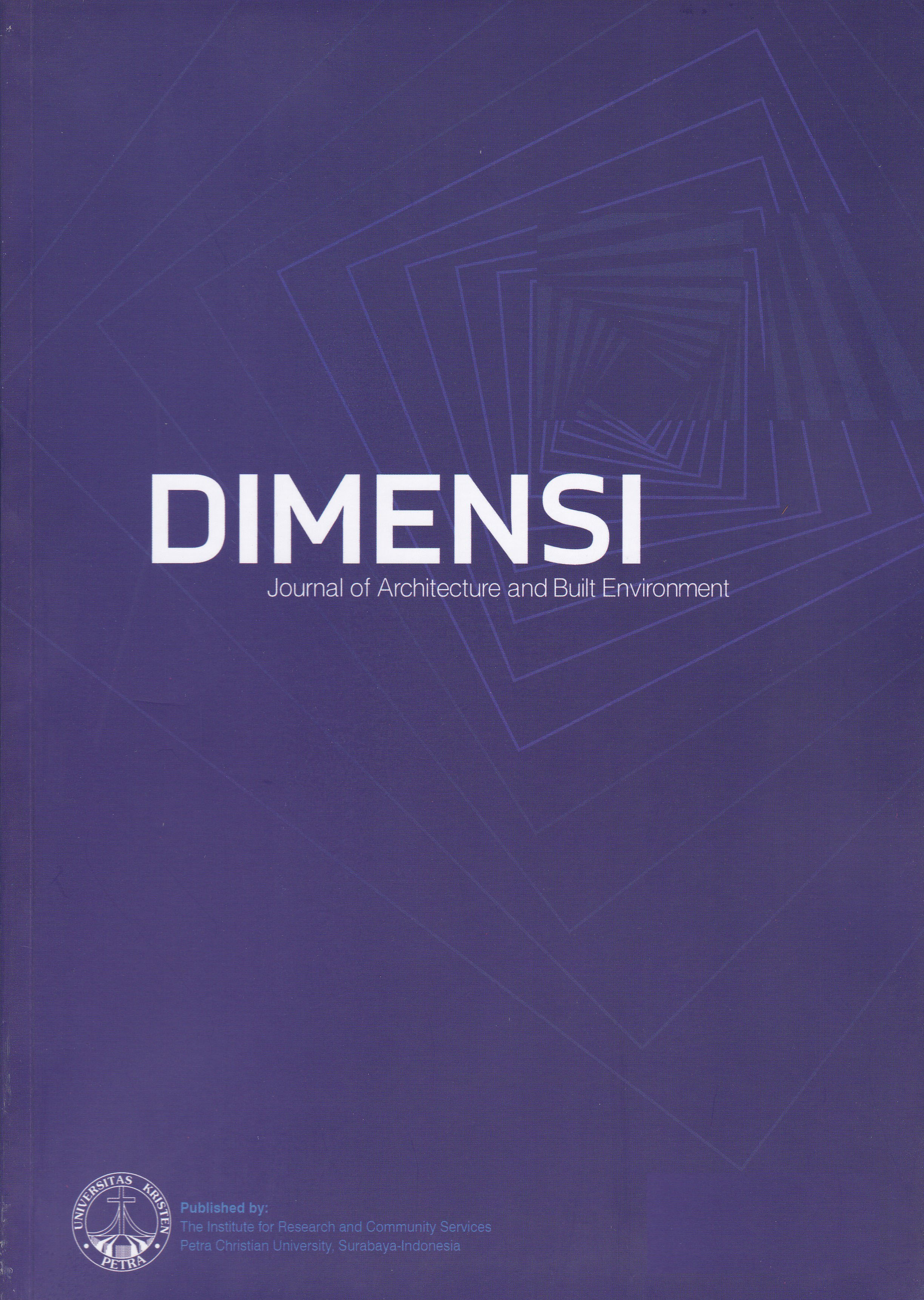The Performance of Bamboo Truss with Gapit Form Under Vertical Loads
DOI:
https://doi.org/10.9744/dimensi.50.2.99-110Keywords:
gapit form, bamboo truss, vertical loadAbstract
The connection in bamboo construction is frequently the weakest point. This research discusses the performance of the gapit form on bamboo truss that effectively optimises the bamboo's inherent strength and can sustain vertical loads. Gapit is a connection form where a member is located between two members which also serves as a construction reinforcement. This truss optimizes the strength of whole bamboo with a total span of 4 meters and height of 2 meters. The gapit form applied at the top chord member, bracing member, and "V" support and column connections which are strengthen with bolts on the bamboo node. This research uses a quantitative method where data collection is taken through an experiment. To test the strength of the truss, a vertical hydraulic compression test was conducted. It was found that the truss can withstand a maximum load of up to 8.72 kN, with a truss decline of 7.27 cm, and a shift of 2 cm. As a result, the use of the gapit form on the truss is considered effective in withstanding large vertical loads.
Downloads
References
Artiningsih, N. K. A. (2012). Pemanfaatan Bambu Pada Konstruksi Bangunan Berdampak Positip bagi Lingkungan. METANA (Media Komunikasi Rekayasa Proses Dan Teknologi Tepat Guna), 8(1). https://doi.org/10.14710/metana.v8i01.5117
Cooper, D., & Schindler, P. (2014). Business Research Methods (12th ed.). McGraw-Hill/Irwin.
Derikvand, M., & Eckelman, C. A. (2015). Bending Moment Capacity of L - Shaped Mitered Frame Joints Constructed of MDF and Particleboard. BioResources, 10(3), 5677–5690.
Dewagana, G. P., & Arif, K. A. (2022). The Sustainability of Bamboo Materials in The Bumi Pemuda Rahayu Bamboo Hall Building. Jurnal RISA (Riset Arsitektur), 6(1), 58–73. www.journal.unpar.ac.id
Huang, P., Chang, W. S., Ansell, M. P., Chew, Y. M. J., & Shea, A. (2015). Density distribution profile for internodes and nodes of Phyllostachys edulis (Moso bamboo) by computer tomography scanning. Construction and Building Materials, 93, 197–204. https://doi.org/10.1016/j.conbuildmat.2015.05.120
Koesmartadi, C., & Anandhita, G. (2018). Mengapa Kuda-Kuda Menjadi Primadona dalam Perkuliaahan Konstruksi Bangunan Pendidikan Arsitektur? Prosiding Seminar Peng-Konteks-an Arsitektur Nusantara, B001–B007. https://doi.org/10.32315/ sem.2.b001
Mustakim, Tanuwidjaja, G., Widyowijatnoko, A., & Faisal, B. (2009). Bambu sebagai Material yang Berkelanjutan dan Affordable untuk Perumahan. Seminar Nasional 2009 Oleh Universitas Kristen Maranatha. http://repository.petra.ac.id/id/ eprint/15567
Sharma, Y. M. L. (1980). Bamboos in the Asia-Pacific Region. In G. Lessard & A. Chouinard (Eds.), Bamboo Research in Asia (p. 99–120). International Development Research Centre.
Taheri, B., Porter, C., Kanellos, N. V., & König, C. (2016). Quantitative Data Gathering Techniques. In K. O’Gorman & R. MacIntosh (Eds.), Research methods for business and management (2nd ed., p. 155–173). Goodfellow Publishers Limited.
Downloads
Published
How to Cite
Issue
Section
License
Authors who publish with this journal agree to the following terms:
- Authors retain copyright and grant the journal right of first publication with the work simultaneously licensed under a Creative Commons Attribution License that allows others to share the work with an acknowledgement of the work's authorship and initial publication in this journal.
- Authors are able to enter into separate, additional contractual arrangements for the non-exclusive distribution of the journal's published version of the work (e.g., post it to an institutional repository or publish it in a book), with an acknowledgement of its initial publication in this journal.
- Authors are permitted and encouraged to post their work online (e.g., in institutional repositories or on their website) prior to and during the submission process, as it can lead to productive exchanges, as well as earlier and greater citation of published work (See The Effect of Open Access).



















